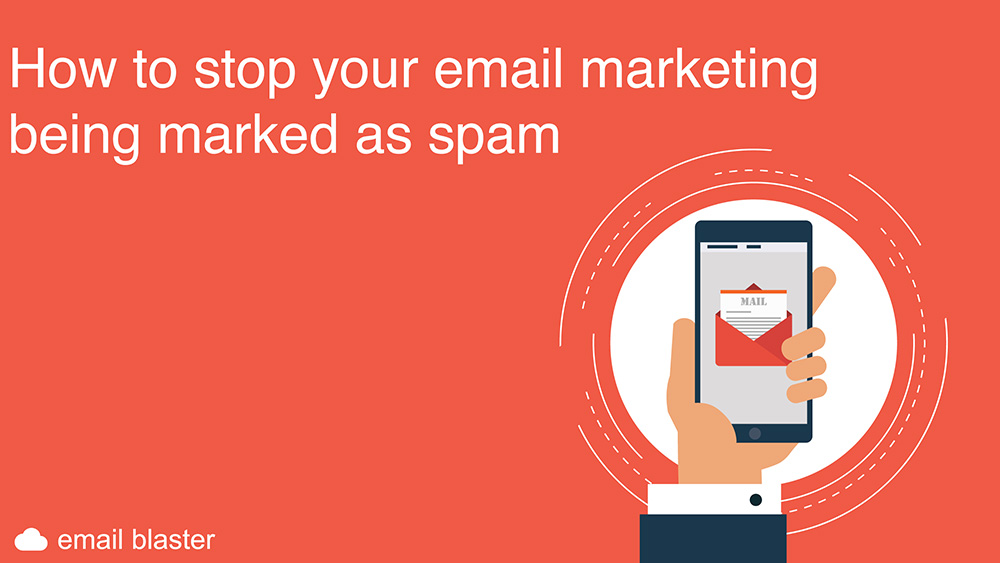As with most email marketing mistakes, sometimes it’s easy to overlook some of the key areas that can prompt your viewer to mark your email as spam.
When we talk about mark as spam, we are talking about your recipient clicking the button in their email client that tags your mailer as spam. For each person that does this, this adds to the spam rating that each sender carries.
Email filtering software will see this spam rating and if it’s high enough, can place your mailer straight into the junk folder.
Your recipient could be a customer of yours or a potential customer who has asked to receive your mailer.
If your mailer doesn’t communicate your point clearly, or if it looks spam-like to the filtering software. Then it could be marked as spam, either manually by the recipient or the filter.
Welcome to email marketing mistakes 101; Ok, so let’s take a look at how you can avoid these email marketing mistakes from happening.
So here is a run down of the top email marketing mistakes
#1 – Subject header line
This is probably one of the most common email marketing mistakes. Your subject header line is really important, it plays a major part in inbox placement, if it looks spammy then the filter could consign it straight to junk without your recipient even seeing it. Even if it gets through fine, your recipient could manually mark it as spam if it doesn’t look familiar or interest them.
So, try to avoid using spam hot phrases such as discount, no obligation, promotion or sale, often spam filters are primed to look for phrases like this and mark as spam.
You also need to try and make the subject header line look as attention grabbing as possible, remember: we want them to open your mailer and read it.
So, perhaps try asking a question, something that beckons the recipient to read further to find out the answer. If it doesn’t immediately get to the point or grab the attention, your viewer may mark it as spam.
#2 – From address
Again, the correct address is vitally important. Most mail filters are set to assign spam points to generic names that are often used for marketing – such as marketing@, offers@, sales@, no-reply@. Using an address prefix like that can be enough to fall fowl of the spam filter.
Your should always use your name, so bob@ or sara@ for example, not only does this help with automated filtering, it also looks more friendly and personal. This really helps with viewer engagement – as we all like to deal with people, not faceless departments.
#3 – Too many images
Using images is all about striking a balance between what looks great whilst making sure that your mailer remains spam friendly.
Spam filters look for images, when they scan an email, one of the metrics that they are looking for is the balance between images and text. If a mailer has more images than text, then this can increase your mailers spam rating and trigger placement in the junk folder.
If you are using email marketing software, they will often have a spam checker app, that will score and advise on your image versus text balance. This is one of the easier email marketing mistakes to rectify
#4 – Mailer is not relevant to the target audience
Once your mailer has ticked all of the boxes in terms of satisfying your recipient’s spam filter, the next job is to offer the viewer strong reasons to read it and act on it.
Possibly the biggest one of these is the mailer’s relevancy to the target audience, make sure your optin subscribers all have an interest in what you are promoting.
For example, I regularly receive a lovely looking mailer promoting hard hats and hi-vis workwear……..we make computer software, our dev team don’t need hard hats to write great software.
If I mark this as spam because it’s not relevant to me – then means that all of my future marketing to every recipient will have a reduced sender reputation.
As with the other email marketing mistakes we touched on earlier – this reputation plays a vital part in the handshake process between sending server and mail filter.
#5 – Purpose of the mailer is unclear
So you’ve put a lot of work into ensuring your mailer meet all of the points we’ve discussed so far. This one unfortunately if often overlooked – and, if overlooked it can have your recipients reaching for the mark as spam button.
If the purpose of your mailer us unclear – this can leave the recipient confused and frustrated, what do you want them to do after reading your mailer;
• Phone you
• Click on your web links
• Read a blog article?
Nowadays, we are all looking to zip through our admin tasks such as dealing with email correspondence as quickly as possible.
The golden rule here is don’t waffle, get your point over quickly and then offer the viewer an obvious call to action.Ok, there we are, if you follow these 5 points, you should get much better inbox placement and maintain a decent sender score.
So, this means less email marketing mistakes and more click throughs, more enquiries and ultimately more sales.
Suggested further reading: So you’ve sent out a mailer with a mistake in it, how do you recover?


